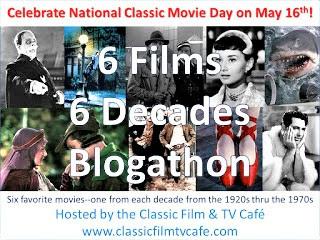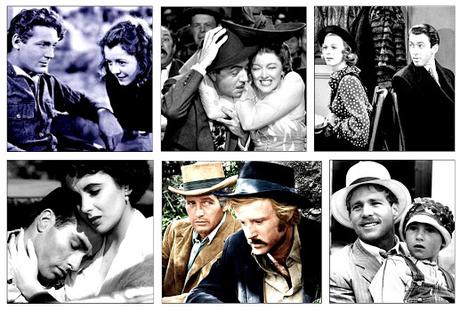
May 16 is here and once more it's National Classic Movie Day. Hooray! Happily, Rick over at the Classic Film & TV Cafe is hosting his annual blogathon in honor of this special day. The theme this year is "6 films - 6 decades," with each participant focusing on a favorite classic from each of six decades. Selecting just a few films from hundreds of favorites is never easy so I came up with a secondary theme of my own to simplify the task of choosing. I'll be spotlighting a film of each decade from the '20s through the '70s that also features a favorite pairing of lead actors.
LUCKY STAR (1929)
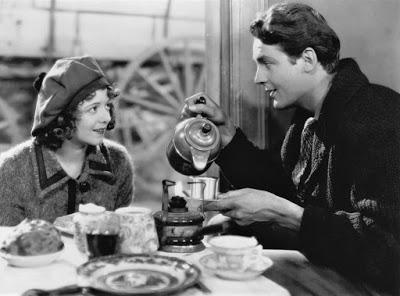
Janet Gaynor and Charles Farrell first starred together in 7th Heaven (1927), an enormously successful silent romance/drama and winner of some of the first Oscars ever awarded. The pair was so charismatic onscreen and the film was so popular that Fox teamed them in eleven more films. Along the way they became "America's favorite love birds." Lucky Star (1929) was their third outing, coming after Street Angel in 1928, and like their first two films it was directed by "the Great Romantic," Frank Borzage. The story is set in rural America in the first decades of the 20th Century. Gaynor plays Mary, the scruffy daughter of a poor widow dairy farmer, and Farrell is Tim, a decent and affable utility worker. When the two meet, they don't hit it off right away.
With its first scenes Lucky Star envelops the viewer in a dreamlike world of woods and hills and farmhouses, of morning mists and falling snow. The two stars are just as affecting: Gaynor with a most endearing childlike quality along with her heart-shaped face and wide expressive eyes, and handsome Farrell, whose special appeal is a potent combination of robust masculinity and genuine tenderness. Borzage wisely takes his time in developing their relationship, letting it gradually progress from enmity to friendship to love. Both Gaynor and Farrell were responsive actors and the gentle unfolding of their romance allows for nuanced performances that also happen to underscore their singular onscreen chemistry. But before the pair connects Tim will go off to World War I and be badly injured on a battlefield in France. The scenes of Mary and Tim getting to know each after his return, by turns moving and sweet and humorous, are the highlights of the film.
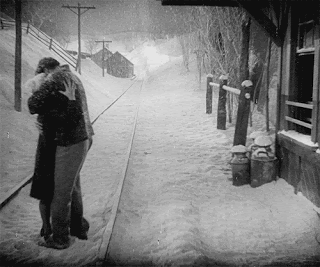
AFTER THE THIN MAN (1936)
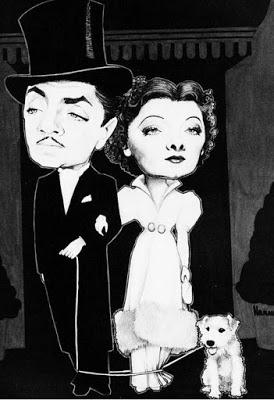
After the Thin Man begins with Nick and Nora traveling back to San Francisco after their foray in New York (and The Thin Man case). When they arrive at their home they're surprised to find a party in full swing. But it is, after all, almost New Year's Eve. That evening at a family dinner, it surfaces that one of Nora's relatives needs Nick's help, but before that Asta, the couple's brilliant fox terrier, will confront a mystery of his own.
The plot is about a missing person, payoff money and vengeance and murders. But who cares about that? I'm watching for the joy of Nick and Nora's (Powell and Loy's) sparkling style and presence, their camaraderie, their witty banter. I'm here for the clever bits involving Nick's Runyonesque cronies (like the pickpocket who runs into the couple at the train station not realizing Nora is Nick's wife). I'm looking out for young James Stewart in a key supporting role as a man who isn't what he first appears to be. And I especially want to once again relish the final scene...
THE SHOP AROUND THE CORNER (1940)
James Stewart and Margaret Sullavan knew each other long before they made their first film together. The two became friends years earlier with the University Players, a summer stock theater company on Cape Cod. Each would go on to Broadway but Sullavan was the first to make her way in Hollywood. She would convince Universal to cast him in their first film, Next Time We Love (1936), and the director later credited her with launching Stewart 's career. The pair co-starred three more times, in The Shopworn Angel (1938), The Shop Around the Corner (1940) and The Mortal Storm (1940). They created big screen sparks in all four outings, but The Shop Around the Corner, an Ernst Lubitsch film, stands out.

Set in a specialty gift shop in Budapest at Christmastime, Stewart and Sullavan portray persistently quarreling co-workers who are unaware that each is the other's treasured pen pal. The topnotch supporting cast includes Frank Morgan as the shop owner and Felix Bressart, Sara Haden and Joseph Schildkraut as some of the other employees. The atmosphere in the cozy workplace is communal and lends itself to the playing out of (work) family dynamics. Meanwhile, Stewart and Sullavan's anonymous love/overt hate relationship continues to twist and turn.
The Shop Around the Corner is one of the several collaborations of Lubitsch and screenwriting great Samson Raphaelson. What they made of their source material turned out to be one of the masterpieces of Golden Age (or any other age) romantic comedy. What Stewart and Sullavan bring are two exquisitely honed performances. In their roles as Kralik and Klara they offer faceted characters, individuals with discernible soft spots and hard edges believably driven by their hopes and insecurities and pride. Add to that the magic of the obvious affinity the two have acting with each other. An MGM executive is said to have reacted to their onscreen bond with, "I don't know what the hell it is, but it sure jumps off the screen."
A PLACE IN THE SUN (1951)
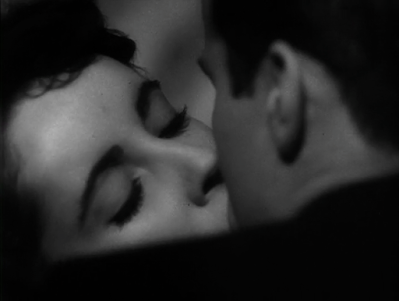
Taylor, 17 when the picture was filmed in 1949, was in the midst of transitioning from the adolescent phase of a stardom that began when she was twelve. Clift, 28 when production began, was early in his film career, having just made Red River (1948) and The Heiress (1949), and not long gone from New York after a ten year career on Broadway. George Stevens directed this adaptation of a play based on Theodore Dreiser's 1925 novel An American Tragedy. Dreiser's novel, itself based on a true story, had already been the basis for a 1931 film that kept the title, was directed by Josef von Sternberg and starred Phillips Holmes, Sylvia Sidney and Frances Dee. That version was a hit in Europe but not in the states. A Place in the Sun was a critical and popular success everywhere and went on to win six Oscars.
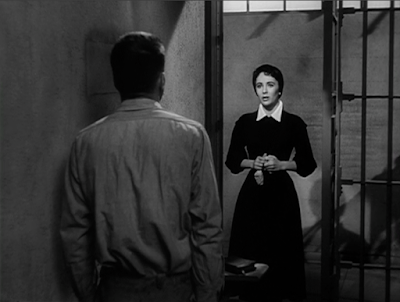
Elizabeth Taylor and Montgomery Clift, like every couple mentioned here, shared an extraordinary onscreen chemistry. It came through most powerfully - breathlessly - in A Place in the Sun. Like the others, these two also clicked off screen, becoming close, lifelong friends. They would co-star again in Raintree County (1957) and Suddenly, Last Summer (1959), and nearly worked together one more time in Reflections in a Golden Eye (1967), but Clift died suddenly before production began.
BUTCH CASSIDY AND THE SUNDANCE KID (1969)
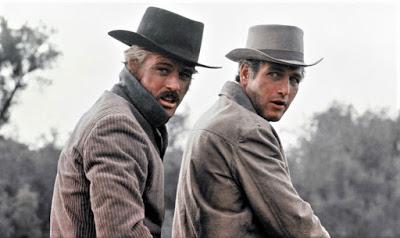
It wasn't a planned pairing. The stars were supposed to be Newman and Steve McQueen. My heart quivers at the thought, but it didn't happen. Redford was then in no way an obvious choice to replace...Steve McQueen. His onscreen persona at that point gave no indication that he had that kind of potential. He'd done the requisite live and series work on golden age TV. His film career had been building with credited roles in respectably popular movies like Inside Daisy Clover (1965), The Chase (1966), This Property is Condemned (1966) and Barefoot in the Park (1967). But no one would have pictured him co-starring in a revisionist Western that would become known as "the Citizen Kane of buddy films." And no one would've thought he would or could give as good as he got from Paul Newman. But he could and he did and he achieved overnight the kind of cachet that can last a lifetime.
Newman was by then a megawatt star known for an irresistible combination of looks, talent and charm. At 44, he'd already been nominated for the Best Actor Oscar four times. He had also established himself as an antihero, a distinctly charismatic one, with roles in films like Cool Hand Luke (1967), The Hustler (1961) and, inadvertently, Hud (1963). Playing antiheroes brought with it counterculture cred and that mattered tremendously in the late '60s. This was something Redford lacked but would gain with Butch and Sundance.
Award-winning screenwriter William Goldman said he intentionally wrote Butch and Sundance as "appealing...different and special" characters and that he labored mightily to balance the drama and humor in his screenplay. Everyone involved knew that, balanced as the script might be and as fine as other crucial elements might be, the success of the picture rested on the success of the onscreen camaraderie of the two leads. They needn't have worried. The measure of Butch and Sudance's success, aside from its monster box office receipts, would come with the scope of its influence. Many, many buddy films would follow, including Newman and Redford's own The Sting in 1973.
PAPER MOON (1973)
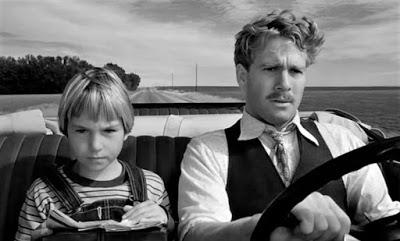
Filmmaker Peter Bogdanovich enjoyed an enviable run in the early '70s with three popular and critically praised films made one after another. The first was The Last Picture Show (1971), a drama set in a dying Texas town in the early '50s. Next came the neo-screwball, What's Up, Doc? (1972) and finally, in 1973, Paper Moon, a comedy drama set in Kansas and Missouri during the mid-'30s. All three are '70s favorites of mine, but for this blogathon Paper Moon has the advantage with its winning father/daughter pairing of co-stars Ryan and Tatum O'Neal. Ryan had co-starred in What's Up, Doc? with Barbra Streisand for Bogdanovich the year before and before that had the male lead in the smash Love Story. He would go on to star in Stanley Kubrick's Barry Lyndon (1975). On the other hand, Paper Moon was Tatum's film debut. She was not a child actor, but with the care and attention of her director along with her own innate abilities she delivered an amazing performance, so true and so appealing that she not only stole every scene in the film but went on to win the Oscar for Best Supporting Actress (even though her role was actually a lead).
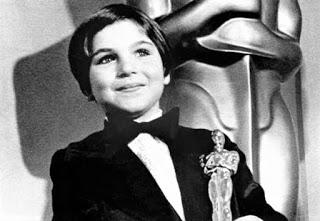
The pairing of the O'Neals was genius. Their characters have an often contentious relationship, though this shifts, but the two seem always connected and are always congruent. Their resemblance is more than physical and never more apparent than when they tangle with each other. There's just no way Moze wasn't Addie's dad. What a pair.
~
Click here for links to all participating blogs in The Classic Film & TV's National Classic Movie Day blogathon. Enjoy!
